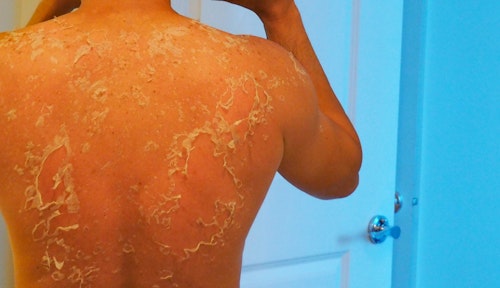Lamellar ichthyosis, the skin condition that causes constant skin shedding
Written By
Joy EmehHuman Anatomist | Health Editor

Lamellar ichthyosis is a rare skin condition that is present at birth and continues throughout a lifetime. It bears other names like 'collodion baby', ichthyosis congenital, and autosomal recessive congenital ichthyosis.
Its names are related to its symptoms and that it is genetic and an autosomal recessive disorder. A baby with this condition is born encased in a collodion membrane, which sheds within 10 to 14 days.
After shedding the membrane, skin with generalized scaling and variable redness would be revealed. Typically, the scaling makes the skin look like that of a fish, but in some cases, it would appear fine or smooth (platelike).
Causes of lamellar ichthyosis
Mutations in the TGM1 gene cause about 90 percent of cases of lamellar ichthyosis. The transglutaminase 1.
Transglutaminase is found in cells of the epidermis. It is involved in forming the cell envelope (a structure surrounding skin cells and helping to form a protective barrier between the body and the external environment).
There are also a few cases where lamellar ichthyosis would be caused by mutations of some other genes aside from the TGM1 gene.
It is generally inherited as an autosomal recessive disorder. This means to develop this disease, both parents must pass one abnormal copy of the disease gene to the baby.
Symptoms of lamellar ichthyosis
Babies with lamellar ichthyosis are usually born with a clear, waxy, shiny skin layer called 'collodion membrane'. Hence, these babies are called 'collodion babies'.
This membrane sheds later, after about two weeks; thus, revealing the red scaly skin underneath, which looks like fish skin. Signs and symptoms also vary in children. A baby with lamellar ichthyosis could experience the following:
- Loss of fluid (dehydration)
- Difficulty in feeding
- Unstable body temperature
- Breathing problems
- Skin or body infections
Older children like Jagannath (the young Indian boy), with this skin condition, lamellar ichthyosis, may experience these symptoms:
- Large scales covering most parts of the body
- Hair loss
- The decreased ability or inability to sweat, which causes sensitivity to heat
- Thickened skin on the soles of the feet and palms of the hands
- Abnormal finger and toenails
Is lamellar ichthyosis life-threatening?
Lamellar ichthyosis is not life-threatening. However, it is a condition that causes severe disfiguring of the human body or looks.
For the affected patients, lamellar ichthyosis can cause considerable psychological stress.
Is there a cure or treatment for lamellar ichthyosis?
It is unfortunate that currently, there is no permanent cure for lamellar ichthyosis. However, management procedures help support the affected people based on the signs and symptoms each person experiences.
For infants, they are mostly kept in a moist environment, like an isolette (incubator) and kept away from anything that will expose them to infections.
Using petrolatum-based creams have also helped keep their skin supple, soft and hydrated.
For older children who experience the formation of large scales on their skin, treatments that promote thinning and peeling of the outermost layer of the skin cells (stratum corneum) are often advised.
Such treatment may include taking long baths, using lubricants and keratolytic agents like urea preparations and alpha-hydroxy acid. Use of topical or oral retinoids might also help those who their skin is extremely affected.
Lamellar ichthyosis life expectancy
Many would wonder "what is the life expectancy of individuals with lamellar ichthyosis?" Do these children with this rare condition survive?
The fact is that lamellar ichthyosis is often stable over a lifetime with occasional periods of exacerbation.
The condition also causes impairment to growth due to a defective skin permeability barrier. But, lamellar ichthyosis is generally not life-threatening, and life expectancy is normal.
People with ichthyosis live relatively normal, productive lives. Before now, babies born with the most severe form of ichthyosis known as Harlequin ichthyosis survived just about the first few days of life.
But, with recent advancements in medicine and neonatal care, harlequin infants now survive and live quite productive and fulfilling lives. Harlequin ichthyosis life expectancy can now be said to be normal.
Lamellar ichthyosis skin condition is genetic and it is not contagious.
Is lamellar ichthyosis painful?
Because lamellar ichthyosis usually presents with skin disfiguration, people often believe that it must be painful.
In lamellar ichthyosis, there is often exfoliation of skin in clumps or plates. The scaling skin often leaves out brownish or reddish skin underneath, but the lamellar ichthyosis disorder is usually not painful.
Is lamellar ichthyosis genetic?
Lamellar ichthyosis is a genetic condition. However, it is inherited as an autosomal recessive disease. This means both your mother and father will have to pass on an abnormal copy of the gene responsible for the condition to you before you can develop it.